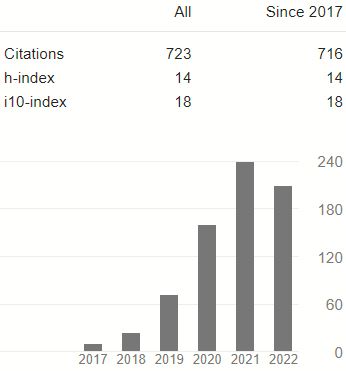RASIO PAJAK OPTIMAL DAN TINGKAT PERTUMBUHAN EKONOMI DI INDONESIATAHUN 1970-2008
DOI:
https://doi.org/10.25170/jara.v10i2.44Keywords:
optimum tax ratio, economic growth, tax revenueAbstract
Many economists have stated that the government through its either fiscal policies or monetary policies has an important role in supporting economic growth of a country. As the consequence of government’s role in the development process, the size of the government – measured as the ratio of total spending to GDP also expanded along with the economic development. This is the fact faced by any country in the world. However, the growth of government’s size implies higher taxation, and thus, it sometimes become a bad sign for the whole economy. The higher tax collected by the government the more productive source taken by the government from the private sector. If positive impacts of government spending cannot exceed negative impact caused by the lost of productive source of private sectors deadweight loss of economy will appear. By assuming that government runs balanced budget in which all of the government expenditure is financed by tax revenue, so the growth maximizing tax ratio can be estimated. This rate measures the ratio of tax revenue to GDP that is needed to achieve the high and stable growth rate. The main objective of this study are to find the growth maximizing tax ratio for Indonesia and to analyze whether Indonesia has achieved this optimum point, or has been operating below it or contrary above it. The regression result show that the growth maximizing tax ratio for Indonesia is 14,64%.
References
Barro, R.J.(1993). Macroeconomics. John Wiley & Sons.
Barro, R.J.(1990). Government spending in a simple model of endogenous growth. Journal of Political Economy, 98, S103-S125.
Chao, J. C.P. and Grubel,H.(1998). Optimal levels of spending and taxation in Canada. In How to use the fiscal surplus: What is the optimal size of government, Herbert Grubel (ed). Vancouver: Fraser Institute.
Due, J. F.(1968). Government Finance: Economics of the Public Sector. Illinois:Irwin.
Gujarati, D.(2003). Basic econometrics. New York: McGraw Hill.
Gwartney, J. D., Stroup, R. L.and Sobel,R. S. (2000). Economics: Private and public choice. The Dryden Press.
Helms, L.J.(1985). The effect of state and local taxes on economic growth : A time series cross section approach. The review of Economics and Statistics : 574-582.
Hill, H.(2001). Ekonomi Indonesia.Jakarta: PT Raja Grafindo Persada.
Kennedy, P. E.(2000). On measuring the growth maximizing tax rate. Pacific Economic Review, 5 : 89-91.
Lin, S. A. Y.(1994). Government spending and economic growth. Applied Economics Journal, 26 :83-94.
Mansury, R. (1996). Pajak penghasilan lanjutan. Jakarta: Ind-Hill Co.
Mansury, R. (1999). Kebijakan fiskal. Yayasan Pengembangan dan Penyebaran Pengetahuan Perpajakan.
Peacock, A. T. danWiseman. (1961). The growth in national expenditure and national income. National Bureau of Economic Research, 72.
Scully, G. W. (1995). The growth tax in the United States. Public Choice, 85: 71-80.
Scully, G. W.(1996). Taxation and economic growth in New Zealand. Pacific Economic Review, 1: 169-177.
Sundrum, R.M.(1986). Indonesia’s rapid growth: 1968--1981. Bulletin of Indonesian Economic Studies,22: 40-69.
Undang-undang Nomor 6 Tahun 1983 sebagaimana diubah terakhir dengan Undang-undang Nomor 28 Tahun 2007 tentang Ketentuan Umum dan Tata Cara Perpajakan.
Undang-undang Nomor 7 Tahun 1983 sebagaimana diubah terakhir dengan Undang-undang Nomor 36 Tahun 2008 tentang Pajak Penghasilan.
Undang-undang Nomor 8 Tahun 1983 sebagaimana diubah terakhir dengan Undang-undang Nomor 18 Tahun 2000 tentang Pajak Pertambahan Nilai atas Barang dan Jasa dan Pajak Penjualan atas Barang Mewah.
Downloads
Published
Issue
Section
License
Authors who publish with this journal agree to the following terms:
- Authors retain copyright and grant the journal right of first publication with the work simultaneously licensed under a Creative Commons Attribution-ShareAlike 4.0 International License that allows others to share the work with an acknowledgment of the work's authorship and initial publication in this journal.
- Authors are able to enter into separate, additional contractual arrangements for the non-exclusive distribution of the journal's published version of the work (e.g., post it to an institutional repository or publish it in a book), with an acknowledgment of its initial publication in this journal.
- Authors are permitted and encouraged to post their work online (e.g., in institutional repositories or on their website) prior to and during the submission process, as it can lead to productive exchanges, as well as earlier and greater citation of published work.














